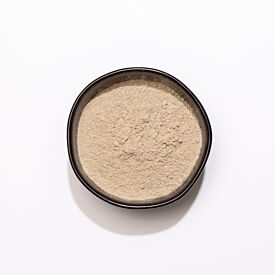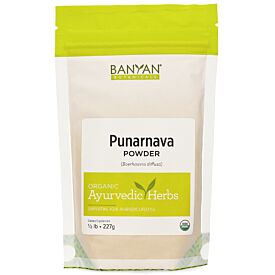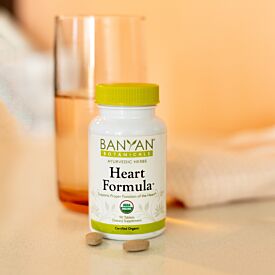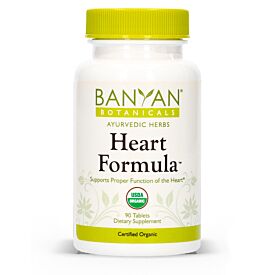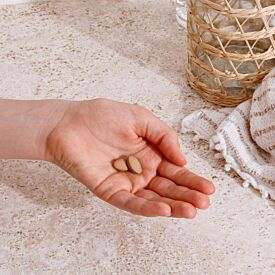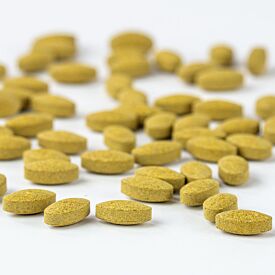The Benefits of Punarnava
Punarnava (Boerhaavia diffusa) is classified as a weed by some, but it is beloved in the Ayurvedic pharmacopoeia thanks to its many benefits and uses. Considered one of the foremost herbs for the kidneys and liver, punarnava is a tridoshic herb that can pacify vata, pitta, and especially kapha dosha.
Ayurveda also considers it a rasayana (rejuvenative). In fact, its name loosely translates as "the one that renews the old body," alluding to its deeply rejuvenative properties.1
In this article:
- Characteristics of the Punarnava Plant
- Punarnava Benefits and Uses
- Modern Research on Punarnava
- How to Take Punarnava
- Is Punarnava Safe?
Characteristics of the Punarnava Plant
Punarnava is sometimes called “the renewer” thanks in part to the translation of its Sanskrit name—punar (“again”) and nava (“new”). This name speaks not only to punarnava’s rejuvenative properties, but also to its hardiness as a plant. After drying out in the hot summer season, it “renews” itself, blooming and growing fruits in the rainy season.2
Although it can be found throughout the world, it grows most abundantly in India and Brazil, where it goes by the name erva tostão.3,4
Other names for this herb include Indian hogweed, spreading hogweed, tarvine, gadhapurana, and spiderling (so called because of its long, slender stems). 5, 6, 7, 8
A perennial creeper that belongs to the four o'clock family or Nyctaginaceae, this plant can thrive in various growing conditions—and we even found it growing wild on one of our farms in India, along with bala, bhumyamalaki, shankhapushpi, and ashwagandha.
In appearance, punarnava grows up to a meter long, with spreading branches and clusters of small, thick, fleshy leaves that are often green and smooth on the top with a pale pink and hairy-textured under-side.
It has large, tuberous roots that are usually yellow, brown, or grey.9, 10 These roots are also sweet in taste, which can attract pests and pose problems to farmers.
Thanks to its hairiness and sticky quality, parts of the plant can get stuck to animal’s legs and human clothing, which can help spread seeds from one place to another.11
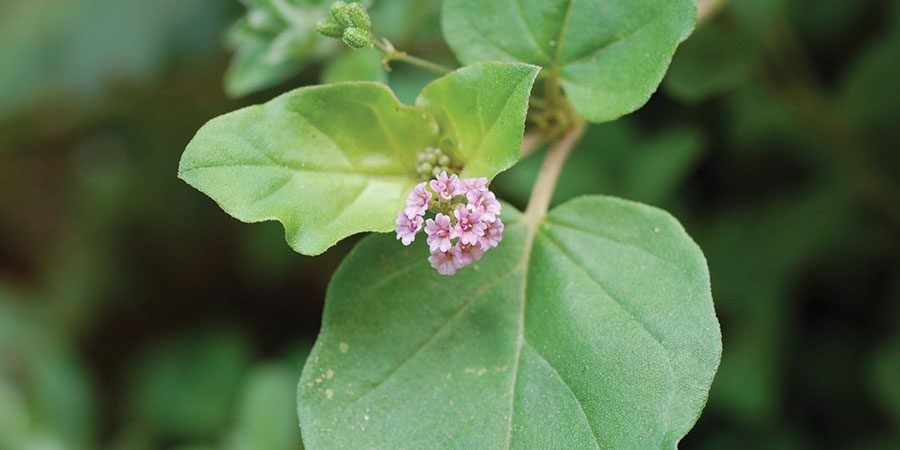
Punarnava Benefits and Uses
Punarnava’s list of benefits and history of use is extensive, stretching back thousands of years and throughout many cultures and regions. It is particularly revered for its unique ability to gently purge the body of excess liquids and stagnation, which benefits many areas of the body, including the urinary system and joints.12, 13
From an Ayurvedic perspective, punarnava has a bitter and sweet taste (rasa), with a heating action (virya) and pungent post-digestive effect (vipaka). It is balancing for all doshas (especially kapha) but may aggravate vata in excess.
Benefits of Punarnava
- Digestion and Cleansing. Thanks to its heating qualities, punarnava enkindles agni (digestive fire) and can help stimulate a sluggish digestive system. It’s opening and cleansing, helping to cleanse out excess kapha, which makes way for nourishment to reach the tissues. 14
- Healthy Weight Management. Punarnava assists the body with breaking down and digesting fat and absorbing excess fluids in the digestive system. This makes it an effective weight management ally—especially for those naturally prone to gaining weight. 15
- Liver and Kidney Health. Well-known as a tonic for the liver and kidneys, punarnava is often used to support these areas of the body.16
- Joint Comfort and Mobility. Punarnava has been traditionally used to bring comfort to the joints and muscles. It promotes comfortable movement of the joints, providing relief from joints experiencing pain due to imbalanced kapha.17
- Supporting the Lungs. Its heating qualities also make it a powerful herb for melting excess kapha in the lungs and respiratory tract.18
- Heart Health. Punarnava is said to be an excellent and nourishing herb for heart health due in part to its clearing action in the circulatory system.19
Modern Research on Punarnava
Over the years, many studies have been conducted regarding punarnava and its benefits, including studies on constituents of punarnava and formulas containing punarnava. Below are a few studies that have researched punarnava’s effects:
- “Phytochemical, Therapeutic, and Ethnopharmacological Overview for a Traditionally Important Herb: Boerhavia diffusa Linn.” PubMed Abstract. May 2014.20
- “A clinical study of Punarnava Mandura in the management of Pandu Roga in old age...” PubMed Abstract. Jul-Sep 2014.21
- “Effect of punarnava on the visual acuity and refractive errors.” PubMed Abstract. May 1962.22
How to Take Punarnava
Punarnava can be effective on its own or in formulas. Banyan Botanicals carries punarnava powder, which is the most traditional method of taking the herb. Ayurveda teaches that taste plays an important role in the digestive process, signaling the body to initiate its own supportive mechanisms, so taking punarnava as a powder allows the opportunity to taste the herb for added benefit.
Punarnava is also included as a major ingredient in over 30 traditional Ayurvedic formulas, as well as in many proprietary blends. 23 It is the star ingredient of punarnavadi guggulu, a traditional formulation that combines punarnava with guggulu resin to carry its cleansing actions deeper into the tissues. We also include this herb in several of our formulas.

Is Punarnava Safe?
As a rejuvenative that can bring balance to all three doshas, punarnava is generally considered safe, although punarnava’s drying nature may increase vata in excess. Since it is also an energetically heating herb, it can potentially increase pitta if too much is taken at once.
Contraindications
Punarnava is not recommended for those who are pregnant or nursing, or for children under the age of 12. 24
Buying Punarnava
You can find punarnava in a number of Banyan products:
- Healthy Kapha
- Heart Formula
- Kidney Formula
- Liver Formula
- Punarnavadi Guggulu
- Trim Support
- Women’s Support
- Breast Care Balm
- Chyavanprash
- Kapha Massage Oil
- Mahanarayan Oil
- Trim Balm
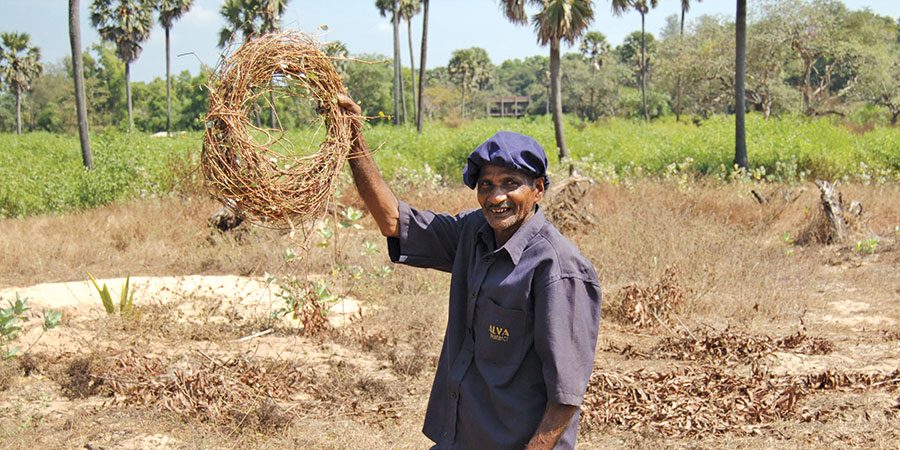
The Growing and Harvesting of Banyan's Punarnava
As a perennial that grows in such a wide range of places and spreads easily, there is little risk of overharvesting punarnava.
Our punarnava is grown on small organic farms in the regions of Rajasthan and Madhya Pradesh in India.
From May to July, punarnava seeds are sown by hand and by a seed drilling machine. We plant in well-prepared soil mixed with well-decomposed farmyard manure. Light irrigation is done after the crop is grown, and it only needs minimal weeding, which is done by hand.
After 120–150 days, the sown crop is ready to harvest by hand with the help of some tools like hoes.
Traceability of the herbs from field to shelf allows the supplier to know where and how the herbs were grown and when they were harvested. Banyan knows exactly where each ingredient was grown and can trace them from your medicine cabinet to the field.
Punarnava's Optimal Growing Locations
Punarnava can adapt to a variety of environments—which helps it earn the title of “weed” in some cases—but it thrives when planted in well-prepared soil with the right amount of heat, sunlight, and water. Without these optimal growing conditions, the roots may not develop well.
It also does well as an intercrop, planted among other beloved Ayurvedic herbs like ashwagandha, shankhapushpi, and bala.
Sustainability
As a part of a bigger conversation on the sustainability of Ayurvedic herbs, it is important to understand where and how plants are grown and harvested. Plants can be cultivated and harvested on private farms where sustainability can be managed, or they may be wild-harvested in a legal way. When plants are wild-harvested illegally, it threatens the long-term sustainability of valuable herbs.
This is why we ensure sustainability by sourcing the herbs used in our products from privately owned farms where it has been cultivated, or from legal wild-craft sourcing. Our herbs are harvested at optimal times, using environmentally sustainable practices that are sensitive to the long-term health of the plants.
Looking After Our Farmers
As a certified B Corporation®, Banyan strongly believes in maintaining socially responsible relationships with farmers and is committed to following fair trade principles which include paying above-market wages, investing in the education of the farmers, and giving back to their communities.
Organic Certification
Organic certification is an especially important consideration when choosing your herbs. When an herb contains genetic alterations or toxic residues from chemical pesticides, the very substance that was intended to support health and healing can be harmful. Buying organic herbs is the safest way to protect your body from these potentially dangerous toxins.
The punarnava in all of Banyan’s products is USDA certified organic, and is organically grown and processed in accordance with the USDA's National Organic Program. Banyan is able to ensure that organic farming practices are adhered to because we receive the ingredients from trusted sources whose methods have been verified and monitored. You can rest assured that punarnava sourced through Banyan Botanicals will be free of pesticides and other harmful chemicals.


